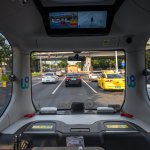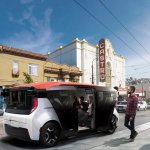The different levels of autonomous vehicles: when science fiction becomes reality

|
Getting your Trinity Audio player ready...
|
We live in a fast-moving world that not long ago would have been considered science fiction. One aspect of technology that has driven us from fantasy into reality is the emergence of autonomous vehicles.
Also known as self-driving cars, autonomous vehicles still confuse many people. How does the technology work? Does the technology work? And what do we actually mean by work in the context of self-driving cars?
There are standards to be met for autonomous vehicles, as set out by the SAE (the Society of Automotive Engineers). The Society has produced a classification system to specify the level of automation a vehicle may have, plus the equipment it offers at each level.
The six levels
There are six levels (zero to five – naturally). The first begins with vehicles that do not possess this technology at all (in other words, they are fully manual), and the last ends with fully autonomous vehicles, where the driver doesn’t have to do anything at any point in the journey.
Understanding the levels of self-driving vehicles may not seem that important right now, but if forecasters are correct, then we will see an estimated 8 million autonomous or semi-autonomous vehicles on our roads by 2025, even despite the recent priority shift of leading manufacturers like Ford and Volkswagen. Who knows? You may end up owning one by then…
The only issue is that all self-driving cars will need to pass through six levels of driver assistance technology advancements before hitting our roads.
Level 0 – Fully Manual
Most vehicles on our roads today fit into this category. In other words, level 0 covers all manually controlled vehicles. Even if there are applications or systems in a vehicle to help someone’s driving experience, such as an emergency braking system, it is the human who ultimately controls the vehicle. If technology does not essentially drive the car in any way, then it does not qualify as an autonomous vehicle.
Level 1 – Driver Assistance
Level 1 is the lowest level of automation. Vehicles at this level may feature one automated piece of technology to assist the driver, such as cruise control or steering. The same applies to adaptive cruise control (where the vehicle remains at a safe distance from any vehicle in front). This is because the human driver still controls many aspects of driving.
Level 2 – Driving Automation in Part
This covers vehicles with ADAS (Advanced Driver Assistance Systems). One example of an ADAS is Tesla Autopilot. This means the vehicle can control the acceleration, deceleration, and steering itself. However, this is still not classified as a fully automotive vehicle because when someone gets into the driver’s seat, they can still take control of the car.
Level 3 – Conditional Driving Automation
Level 3 is quite different to level 2, in terms of the level of technological enhancement involved. Vehicles in level 3 are classified as having “environmental detection” abilities. For instance, it could accelerate past another vehicle by itself. However, these vehicles still require a human to control other aspects of driving and to be alert at all times. Although the vehicle may be able to complete such tasks, it may be unable to do others safely, so a human driver is needed at all times.
From drivers to passengers
Level 4 – High Driving Automation
If things go awry, level 3 cars require a human driver to take over. But level 4 vehicles can intervene independently if a need is sensed. This is the main difference – and perhaps the biggest leap in the levels so far. Because of this, level 4 vehicles tend not to require human assistance in most scenarios, but humans can still choose to manually override the vehicle in the event that they believe they can achieve better results. Importantly, level 4 is the first level that does not require a human to be ready to intercede at any moment. Because of that, it is the first level regarded by some technologists as delivering a measure of “true autonomy.”
Because of current legislation and infrastructure in place, geofencing is required to make level 4 automation a reliable reality. This means that level 4 vehicles can only operate in limited areas, such as urban environments with top speeds of 30mph.
Level 5 – Full Driving Automation
The final level covers vehicles that require no human interaction whatsoever at any time. These vehicles don’t even need to have steering wheels, and many do not have brake or accelerator pedals, either. By designing a vehicle with automation front and center in the schematics, the mechanisms for human control can be removed from the equation.
Level 5 vehicles are not limited by geofencing, so they can travel wherever they please. Whatever a human driver can do, a level 5 vehicle can do too.
Right now, there are a number of level 5 autonomous vehicles being tested worldwide but, as of 2022, none are available to the public. Japan is working on some level 4 vehicles and the infrastructure required to make them operable, while many Western carmakers, having tried to achieve level 4 for over a decade have restructured their priorities recently, and are now aiming to deliver level 3 with a degree of ubiquity before moving forward to the next level.
Check out this handy table outlining the different levels of autonomous driving. And watch this space – whoever cracks levels 4 and 5 first is likely to largely dictate the future of self-driving cars for at least a decade.










